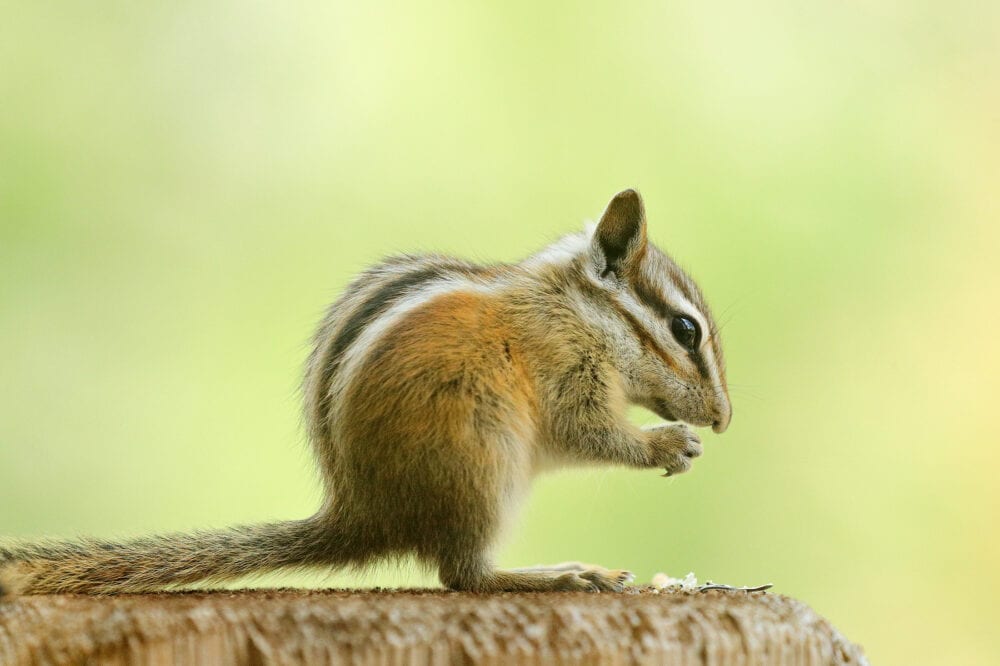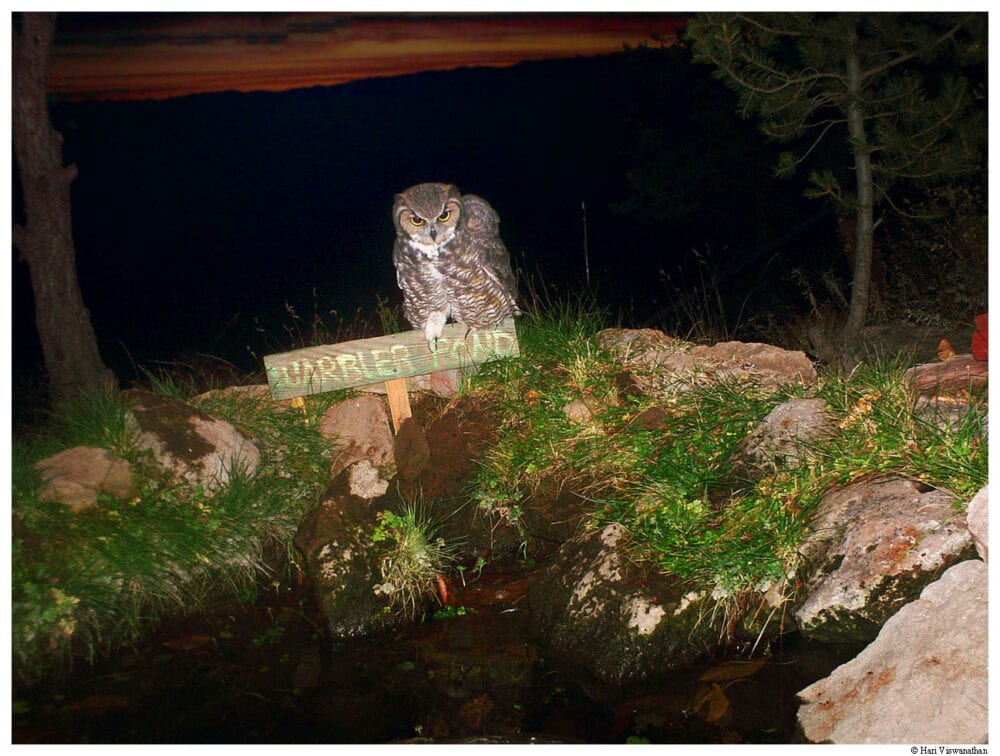
By Mariana Rivera Freeman
We’ve all heard the phrase “survival of the fittest,” which has evolved into something apart from its original meaning. But regardless of its Darwinian definition, I actually want you to forget the phrase entirely.
Instead, I want you to think of life on Earth as “survival of the sharers.” A healthy ecosystem is one in which not a single species dominates, but rather many species coexist and share resources. Humans are one of those species. So, in the spirit of “survival of the sharers,” let’s look at a couple of best practices for sharing our backyards with wildlife.
First, Keep Your Distance
It really is special when a wild animal walks through your yard or lands on your balcony, but wildlife is best admired from a respectful distance. Watch from your window, pull out your binoculars, or use a wildlife camera (especially handy at night), but do not approach wildlife.
Personally, I like the peeking-behind-a-curtain method. I’ve been witness to some surprising, even comical, behaviors while hiding my presence. My favorite was a gangly fawn attempting to spar with an antlered buck, who gently pushed the fawn away four or five patient times until the little guy dared to kick him, which you can imagine was not well-received.
Provide Some Resources

Back in March, we featured an article on certified wildlife habitats. I plan on working on one myself this spring. However, if you aren’t able to certify your space, don’t you worry — you can still provide resources for your wild friends.
If you have trees, cones and acorns, berries, flowers, shade, or water in your yard, you have a resource for wildlife, at no cost or extra effort. The same goes for downed logs, overgrown bushes, and tall grass. Gladly, you needn’t provide for every element of habitat (good news for apartment dwellers!). If you don’t have a yard but you have a bird feeder on a balcony, you’ve got extra sustenance for the birds and they will find habitat somewhere nearby. You can offer other small resources on a balcony like nectar, little fountains, potted plants, and bird or bat houses. You can share your space no matter how large or small.
Set Friendly Boundaries
Of course, all’s well that ends without animals inside the house. Wildlife has a default attitude when it comes to resources: “If no one else is using it, I can use it.” This is the ecology behind survival of the sharers, and how biodiverse life forms can thrive in one ecosystem.
But it also means that if a gopher can reach your tomatoes, those roots are hers. If a mouse can get into your walls, your house is hers (and so are your wires and insulation!). It takes a bit of extra work, but you can avoid conflict with your animal friends by simply setting some restrictions. Install wiring under and around your garden, erect fencing to protect your landscaping, fix little (or big) holes and crevices in your walls, close your garage at night, and so on. Wildlife can cause considerable damage to your property if you allow it to, even inadvertently, and misunderstandings can be hazardous for you and the animal. So keep everybody safe and happy.
With both caution and admiration, coexisting with wildlife can be as easy as it is natural. As Homo sapiens, our species has the advantage over resources on Earth, and we take up a lot of space. It’s our responsibility, then, to share what we can when we can so that the rest of the animal kingdom can satisfy their hunger, slake their thirst, and move where they need to move — even in our own backyards.

Thank you for this article, Mariana! You covered important information on providing resources for wildlife and keeping them outside of our homes. I’m happy to see that you are planning to certify your backyard as a wildlife habitat. Four years ago, Luisa from the National Wildlife Federation presented Councilor Pete Sheehey a certificate declaring that Los Alamos was the first Community Wildlife Habitat in our state, the Land of Enchantment. Now we have over 200 yards certified in our community! I am reminiscing on this day and the amazing progress our community has made in making Los Alamos a wildlife-friendly community.